
Atlas F1 Magazine Writer
25 drivers took part in the 2004 Formula One season, including fives returnees, four rookies, eleven race winners, and two World Champions, in a season dominated by the most successful of them all. Atlas F1's Richard Barnes reviews the drivers' 2004 season
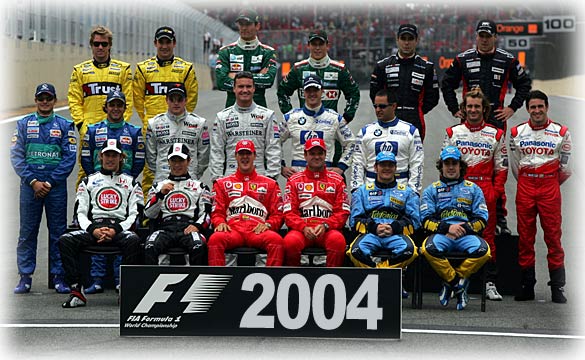
After the close call of 2003, the six-time champion was in no mood to give the opposition a glimpse, and dominated the first two-thirds of the year in unprecedented style. Only the retirement from Monaco (at a race where he appeared beaten, to be fair) prevented Schumacher from recording a previously unthinkable 13-win streak. After sealing the Championship in Belgium, Schumacher went off the boil slightly, winning only once more (at Suzuka) during the remaining races of the season. But, by that time, it was academic anyway. It's hard to imagine any driver dominating a season more than Schumacher did this year. Then again, that's what everybody said back in 2002.
Despite clinching second in the WDC, an improvement of two places from last year's fourth, 2004 was a disappointing season for the Brazilian. In a sport where any driver's teammate provides the first and most credible benchmark, Barrichello has the most thankless task in F1. For the first 13 races of the year, Barrichello was totally shut out, and even the joy of career-first back-to-back wins in Italy and China couldn't disguise the fact that Barrichello scarcely threatened his team leader until the WDC title was sewn up.
2004 seemed full of promise for the aggressive Colombian. A very competitive end to the 2003 season, combined with a radical new nose design by Williams in Montoya's last year for the team, marked this as a 'make or break' season. Sadly, the car underperformed, the nose was ditched in favour of a more conventional design, and Montoya vanished back into the pack. He managed to snatch a late season consolation with victory in his final race for Williams at Brazil. But Montoya surely wouldn't have expected to trail relative outsiders like BAR's Jenson Button or Renault's Fernando Alonso in the WDC title race.
It wasn't that the younger Schumacher disappointed in 2004, but rather that he never really got going. Usually, one can count on Schumacher to get things absolutely right at a handful of races during the season, and to win at least one or two of those. A high-impact shunt in America sidelined Schumacher for half a dozen races with a back injury, completely derailing his season's progress and rhythm. Although, having not scored points for two months prior to Indianapolis, he was treading Championship water at best. It will be cold comfort to Schumacher that his replacements, Marc Gene and Antonio Pizzonia, fared badly as well. Schumacher's most competitive performance was a spirited second at Suzuka after his return from injury. For a driver who relies largely on his ability to finish and secure points consistently, six non-scoring races were scant reward for his season's effort.
Standing in for an experienced and established driver like Ralf Schumacher is both a curse and an opportunity to be noticed. Three seventh-place finishes did little to either enhance or spoil Pizzonia's credentials as Mark Webber's teammate at Williams next year. The young Brazilian did manage to outperform Williams' other stand-in, tester Marc Gene, although that alone will not be enough to secure a seat with Williams, one of the most sought-after positions in F1.
After standing in for Ralf Schumacher and performing creditably at Monza 2003, Gene will be disappointed that his two chances this season yielded no points. Even as a regular tester who is familiar with the Williams machinery, Gene faced a huge challenge in adapting to the different circumstances of competitive racing - particularly given just two races in which to prove himself.
Coulthard's final season for McLaren, and probably his last season in potentially race-winning machinery (if not the sport itself) was a low-key effort. The ten-year veteran acquitted himself well against teammate Kimi Raikkonen in the original 2004 McLaren MP4-19. Alas, performing well against a top-ranked teammate counts for little when both are languishing in the lower half of the field. Once the revised and much improved MP4-19B was launched, Coulthard fell off Raikkonen's pace. For the first time in his 11-year F1 career, Coulthard failed to finish a single race on the podium.
Like Juan Pablo Montoya, Raikkonen had every reason to expect that 2004 could be his year to take the final step from challenger to champion. He'd contested the 2003 Championship right down to the final lap at Suzuka, in a design that was essentially a year older than his rivals' cars. Surely a brand new McLaren design, available from the very first race of the year, would launch the Finn to even greater heights. However, F1 epitomises the saying 'That was then, this is now', and Raikkonen felt its sting during 2004. The introduction of the revised MP4-19B design in France gave him a second-half boost, enabling Raikkonen to earn consolation podiums at Britain, China and Brazil. However, it was his victory in Belgium, on the Spa-Francorchamps circuit known to be among Michael Schumacher's favourites, that Raikkonen rejuvenated the faith in his ability.
Trulli's form was a revelation in 2004. If anybody believed that Trulli would play second fiddle to rising Renault star Fernando Alonso, the Italian showed convincingly that he can do far more than just set blazing qualifying laps. When Michael Schumacher faltered at Monaco, it was fitting that Trulli was on hand to benefit and score his maiden win. Sadly, Trulli's fall from grace was almost as spectacular as his sudden success. Once it had been finalised that the Italian's services were not required by Renault in 2005, Trulli's pace dropped off alarmingly. His protestations, that the Renault outfit were no longer giving him competitive machinery, seemed justified when he joined new employer Toyota and was immediately and visibly quicker than any of the existing Toyota drivers.
Although the two Renault drivers never showed any hint of open animosity towards each other, Alonso seemed occasionally distracted by the unexpectedly competitive Jarno Trulli in the sister car. This peaked at Monaco: while Trulli was en route to his maiden win, Alonso crashed out of contention following an improbably optimistic move around the outside of Ralf Schumacher's Williams in the tunnel. To his credit, Alonso doesn't dwell on his mistakes and bounced back with some fine performances, notably his three podiums in four races at France, Germany and Hungary. Renault couldn't maintain their early season performance throughout the year, but it wasn't from lack of driver skills or effort.
Since winning the WDC title improbably early in only his second full year of F1, Jacques Villeneuve has been dogged by unreasonably high expectations. The wildly optimistic notion that he could win for BAR in their first season ever became a millstone that dogged his entire tenure with the team. And, even after almost a full year of inactivity, Villeneuve was expected (by some) to immediately compete against the very fast and settled Fernando Alonso - in an unfamiliar and notoriously difficult car, to boot. While he couldn't be expected to match Alonso right away, even Villeneuve himself must have been surprised at the performance differential between himself and Flavio Briatore's franchise driver. For a change, Villeneuve's 2005 prospects will be evaluated with somewhat more realistic expectations of his capabilities.
Finally, Jenson Button lived up the vast potential that he showed in earlier years, potential that prompted Sir Frank Williams to give him a chance when more experienced drivers were available. Button's early years in F1 were difficult, pitting him against a range of quick and experienced drivers, often in cars that weren't easy to drive. The affable Englishman showed poise and maturity in working through these challenges, and these qualities are now embodied in his smooth and studied style. After failing to finish even once on the podium prior to this season, Button atoned in 2004, following up on his maiden podium performance with nine more before the season ended. He adapted superbly to the new qualifying format, showed an ability to handle longer stints with heavier fuel loads, and almost single-handedly propelled BAR to 'best of the rest' status. More importantly, he stepped into the role of 'team leader' with the same lack of fuss and fanfare that characterises his driving. Button's season was marred slightly by the contractual debacle between BAR and Williams but, on track, he performed better than anyone dared to expect.
Sato's was a season of two distinct halves. During the first eight races, he recorded just two fifth-place finishes, and spent most of his time indulging his proclivity for spinning off or suffering blown engines. The US GP at Indianapolis served as a season and career watershed, where Sato equalled the best ever Japanese driver result of a third-place podium finish. After that, he settled down admirably, recording another six points finishes to help BAR clinch the runners-up spot in the Constructors' Championship. Sato has calmed down considerably since working with Jenson Button, although he has sacrificed some of the raw speed he showed as a rookie. Although not nearly as consistent as Button, he has become a more dependable driver – to his and his employer's benefit.
After years of rumbling roughshod over rookie drivers in the lower half of the grid, Giancarlo Fisichella was surprised by teammate Felipe Massa early on. Although the Sauber wasn't competitive enough to score points regularly, Fisichella was outqualified often by his vastly less experienced teammate. Fisichella has a reputation for being able to squeeze the most out of a difficult and uncompetitive car. Yet, curiously, as the Sauber improved later in the season, so did Fisichella relative to Massa, and the Italian ended up winning the qualifying and WDC points benchmarks quite comfortably. With Fisichella's move to Renault for 2005, his status as the unluckiest driver on the grid may become a thing of the past.
Like Takuma Sato, Felipe Massa's debut F1 season was marked by wild overdriving. Even on the long straights, Massa was continually making corrections with the wheel. A season of testing for Ferrari knocked the rough edges off his style, and he re-entered the fray as a better and smoother driver for Sauber in 2004. The Brazilian still has moments that defy logic and explanation, but he has settled into a far more effective and sustainable style. Although he lacked Giancarlo Fisichella's consistency over the season, Massa managed to emulate his team leader's best achievements – one fourth and one fifth-place finish. The highlight of his season was undoubtedly in front of his home fans at Interlagos, where Massa first trailed Barrichello in a Brazilian 1-2, and then enjoyed a brief moment of race-leading glory before his pitstop.
Webber was the disappointment of 2004, although through no fault of his own. The Jaguar stubbornly failed to follow through on the team's or Webber's potential in race trim, and Webber's occasional top six qualifying performances amounted to just four points finishes, the highest of which was sixth in Germany. The news that Webber had been signed by Williams for 2005 may have softened the blow. But the Australian, the consummate team player, wanted to perform for Jaguar as well. By the time he retires from the sport, Webber may still look back on his two years with Jaguar as a period of intense frustration and few fond memories.
Austrian Klien was signed as little more than a supporting act (both in sponsorship and driver performance terms) for Jaguar's star driver Mark Webber. To his credit, Klien worked hard to refute this status and establish genuine credentials. Like Webber, he was frustrated by Jaguar's ongoing lack of competitiveness. Although outqualified to the tune of 15-3 by his team leader, Klien will draw some consolation from the fact that his only points finish (sixth in Belgium) matched the best of Webber's achievements for the year.
Toyota drivers are saddled with the high expectations that accompany the Japanese giant's budget and aspirations, if not their F1 pedigree. Like Mika Salo and Allan McNish before him, Cristiano da Matta fell victim to those expectations, and was replaced by test driver Ricardo Zonta after the German GP in July. 2004 had been a dismal season for Brazilian da Matta, who had hoped to repeat his American ChampCar success in F1. But with just 3 points from 12 races in 2004 (compared to his total of 10 points in the 2003 season), and with Ralf Schumacher already signed for Toyota in 2005, da Matta's relationship with the team was cut short.
Like teammate Cristiano da Matta, Panis was unable to produce the results that Toyota expected. The French veteran had built a reputation as an ace car tester and developer, thanks largely to his work with McLaren, and his signing by Toyota seemed a sensible decision at the time. But, as the results failed to materialise and Toyota placed increasing blame on its drivers, it became clear that Panis' F1 options were running out. After a downbeat season of just three points finishes and a total of 6 WDC points, the veteran of 157 GP decided to call it a day.
Test and reserve driver Zonta was drafted in to replace Cristiano da Matta from Hungary onwards, in a desperate attempt to eke better results out of the revised TF104B design that had been introduced in Germany. Neither the new car nor the new driver provided much improvement, and Zonta was outqualified 3-1 by old hand Olivier Panis, and then again by new signing Jarno Trulli at the season finale in Brazil. Without a point and with just one top ten finish from five starts, Zonta did little to attract the attention of employers in an already crowded field.
Heidfeld continues to suffer the tag of being one of the unluckiest drivers in F1. The German sticks out like the proverbial sore thumb among the pay drivers and rookies at the tail of the grid. Heidfeld did manage a scant three points in the hopelessly inadequate Jordan, and enjoyed 13-5 qualifying superiority over his teammates Pantano and Glock. But teammate comparisons mean little when Heidfeld is being compared to rank F1 novices, and is continuously overlooked by the major teams. The German deserves so much more than he's getting from the sport.
By Canada, Pantano found himself in the unenviable position of providing neither the results nor the sponsorship money to satisfy team owner Eddie Jordan, and was temporarily replaced by Timo Glock. Although Pantano temporarily patched up his differences with Jordan and resumed racing, it was a futile effort. The Italian was ritually outperformed by Nick Heidfeld, failed to score a Championship point, and was eventually dropped for the final three races of the season.
Of the part-timers drafted in by various teams during the season, German Timo Glock made perhaps the greatest impact. On debut for Jordan in Canada, he matched Nick Heidfeld's best result of the season (seventh) and earned two precious points for the team. Although he failed to even threaten a top ten finish during his second stint (the final three races of the year), he nevertheless caught the eye again with a competitive top six time during a soaked practice session at Suzuka. That sort of wet weather performance, in a relatively unfamiliar car on a track that he was still learning, merits another F1 chance for Glock.
Like Mark Webber and Fernando Alonso before, Bruni arrived at Minardi not as a pay driver but with genuine racing prospects. Unfortunately, the increased reliability of the whole field, coupled with the worse than usual form of the 2004 Minardi, resulted in a fruitless season's effort from Bruni. Ordinarily, Minardi's only hope of points is from attrition removing the faster cars in front of them. With almost all the teams getting at least one car to the finish in every race of 2004, and with Bruni suffering the worst reliability record in the field, his failure to score wasn't surprising.
Baumgartner may be Hungary's first F1 competitor, but this wasn't enough to convince the sport's observers that he belonged at the pinnacle of motor sports. Criticised early in the season for appearing out of his depth, Baumgartner worked hard and improved steadily throughout the season. Although he was generally outdriven by teammate Gianmaria Bruni, Baumgartner did have the satisfaction of scoring Minardi's solitary Championship point, via an eighth-place finish at Indianapolis.
 Michael Schumacher - Scuderia Ferrari
Michael Schumacher - Scuderia Ferrari
WDC Position: Champion
Wins: 13
Podiums: 2
Total points: 148
 Rubens Barrichello - Scuderia Ferrari
Rubens Barrichello - Scuderia Ferrari
WDC Position: 2nd
Wins: 2
Podiums: 12
Total points: 114
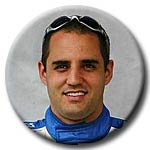 Juan Pablo Montoya - BMW Williams
Juan Pablo Montoya - BMW Williams
WDC Position: 5th
Wins: 1
Podiums: 2
Total points: 58
 Ralf Schumacher - BMW Williams
Ralf Schumacher - BMW Williams
Races: 12
WDC Position: 9th
Podiums: 1
Total points: 24
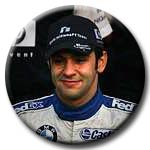 Antonio Pizzonia - BMW Williams
Antonio Pizzonia - BMW Williams
Races: 4
WDC Position: 14th
Total points: 6
 Marc Gene - BMW Williams
Marc Gene - BMW Williams
Race Starts: 2
WDC Position: 21st
Total points: 0
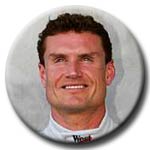 David Coulthard - McLaren Mercedes
David Coulthard - McLaren Mercedes
WDC Position: 9th
Total points: 24
 Kimi Raikkonen - McLaren Mercedes
Kimi Raikkonen - McLaren Mercedes
WDC Position: 7th
Wins: 1
Podiums: 3
Total points: 45
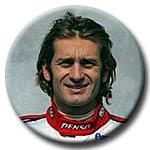 Jarno Trulli - Renault, Toyota
Jarno Trulli - Renault, Toyota
WDC Position: 6th
Wins: 1
Podiums: 1
Total points: 46
 Fernando Alonso - Renault
Fernando Alonso - Renault
WDC Position: 4th
Podiums: 3
Total points: 59
 Jacques Villeneuve - Renault
Jacques Villeneuve - Renault
Races: 3
WDC Position: 21st
Total points: 0
 Jenson Button - BAR Honda
Jenson Button - BAR Honda
WDC Position: 3rd
Podiums: 10
Points: 85
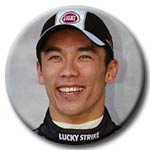 Takuma Sato - BAR Honda
Takuma Sato - BAR Honda
WDC position: 8th
Podiums: 1
Points: 34
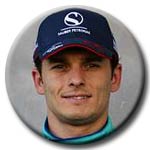 Giancarlo Fisichella - Sauber Petronas
Giancarlo Fisichella - Sauber Petronas
WDC position: 11th
Points: 22
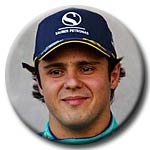 Felipe Massa - Sauber Petronas
Felipe Massa - Sauber Petronas
WDC position: 12th
Points: 12
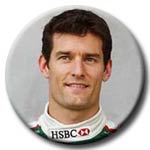 Mark Webber - Jaguar Cosworth
Mark Webber - Jaguar Cosworth
WDC position: 13th
Points: 7
 Christian Klien - Jaguar Cosworth
Christian Klien - Jaguar Cosworth
WDC position: Tied 16th
Points: 3
 Cristiano da Matta - Toyota
Cristiano da Matta - Toyota
WDC position: Tied 16th
Points: 3
 Olivier Panis - Toyota
Olivier Panis - Toyota
WDC position: Tied 14th
Points: 6
 Ricardo Zonta - Toyota
Ricardo Zonta - Toyota
Races: 5
WDC position: Tied 21st
Points: 0
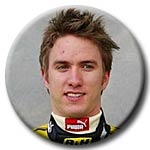 Nick Heidfeld - Jordan Ford
Nick Heidfeld - Jordan Ford
WDC position: Tied 16th
Points: 3
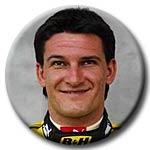 Giorgio Pantano - Jordan Ford
Giorgio Pantano - Jordan Ford
Races: 14
WDC position: Tied 21st
Points: 0
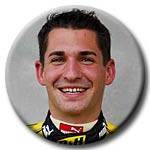 Timo Glock - Jordan Ford
Timo Glock - Jordan Ford
Races: 4
WDC position: 17th
Points: 2
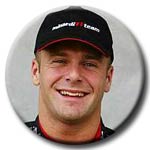 Gianmaria Bruni - Minardi Cosworth
Gianmaria Bruni - Minardi Cosworth
WDC position: Tied 21st
Points: 0
 Zsolt Baumgartner - Minardi Cosworth
Zsolt Baumgartner - Minardi Cosworth
WDC position: 20th
Points: 1
Please Contact Us for permission to republish this or any other material from Atlas F1.
|
Volume 10, Issue 44
2004 Season Review
The Atlas F1 Top Ten
2004 Race-by-Race Review
2004 Drivers Review
2004 Teams Review
2004 Technical Review
Bjorn Wirdheim: Going Places
2004 Qualifying Differentials
Columns
On the Road
Elsewhere in Racing
> Homepage |
